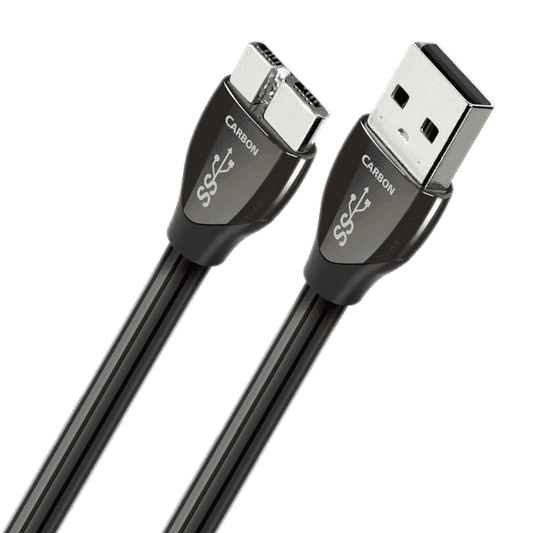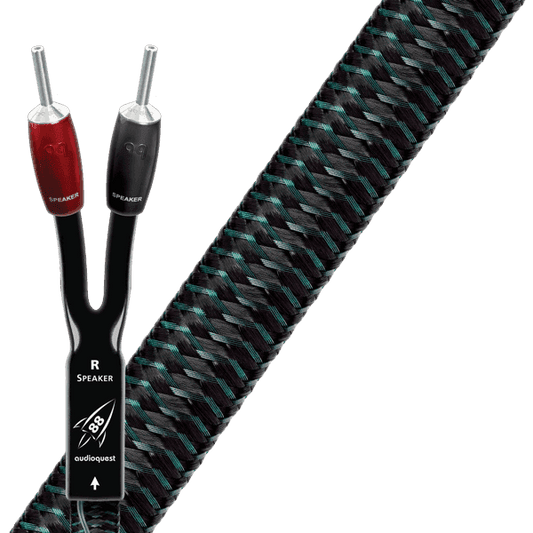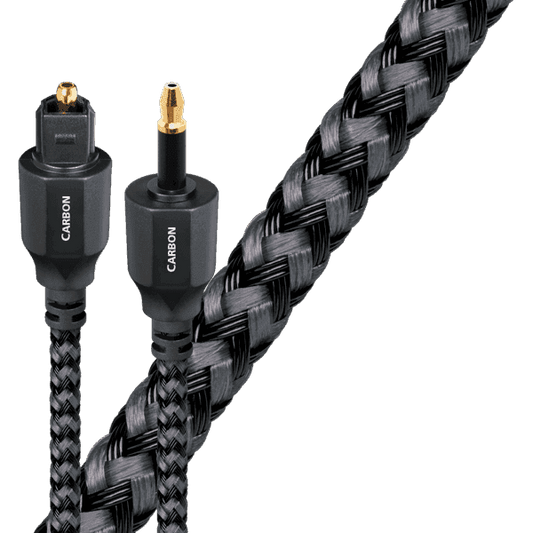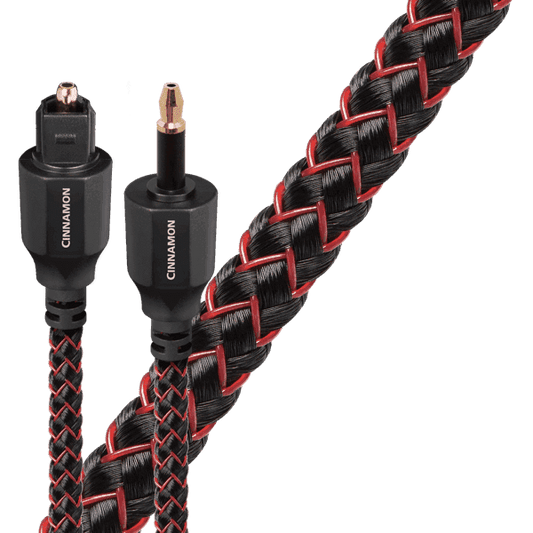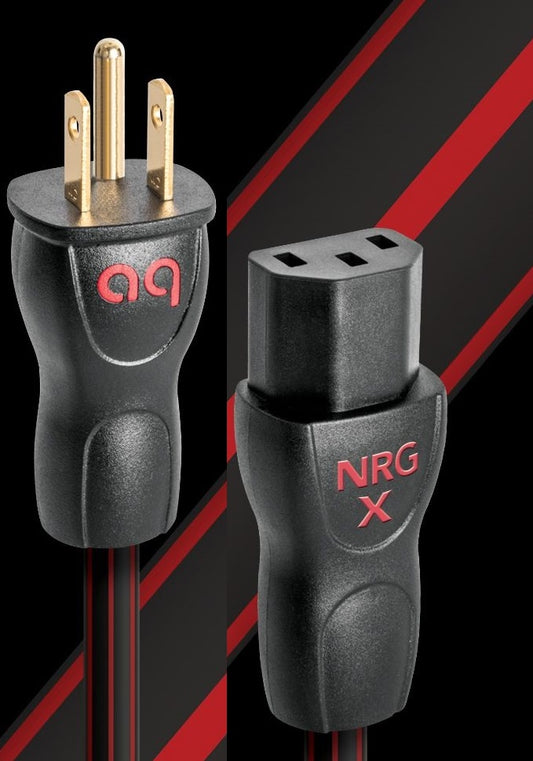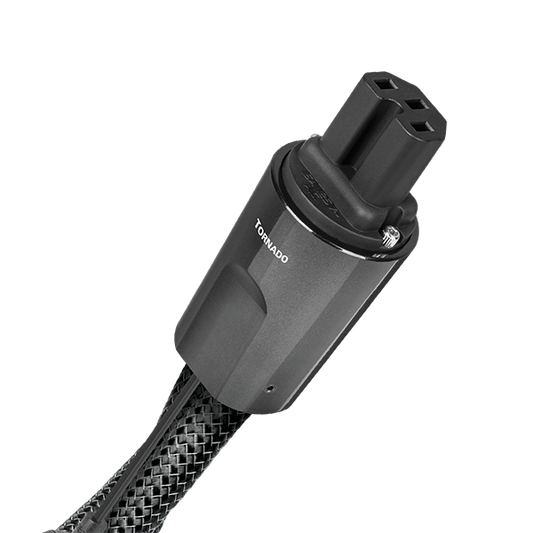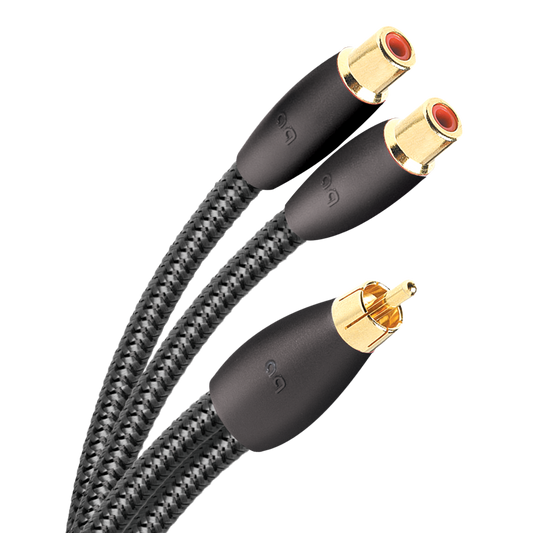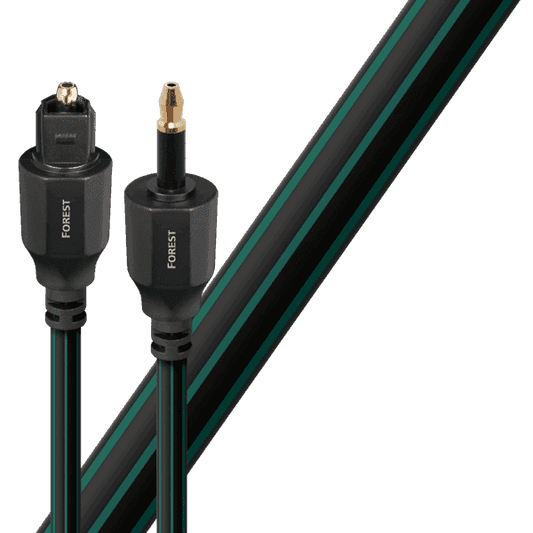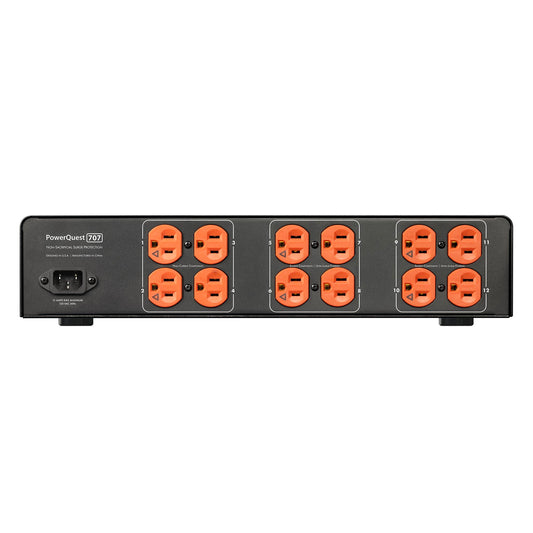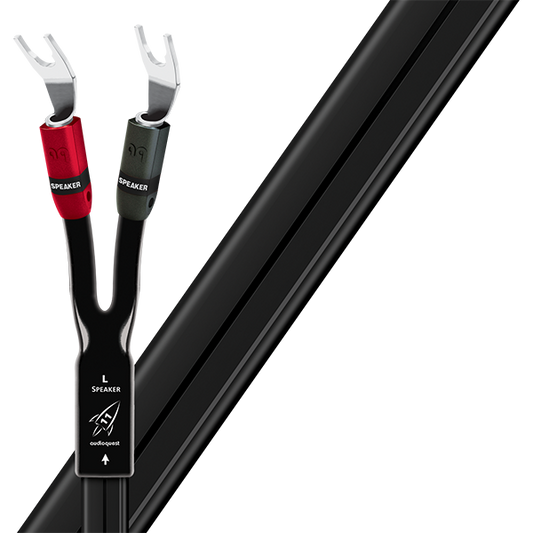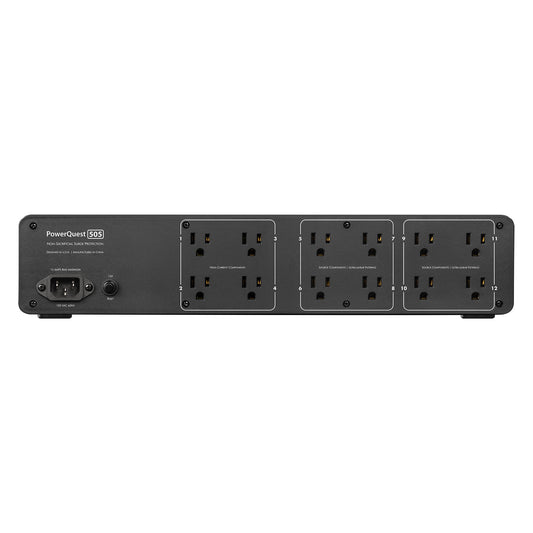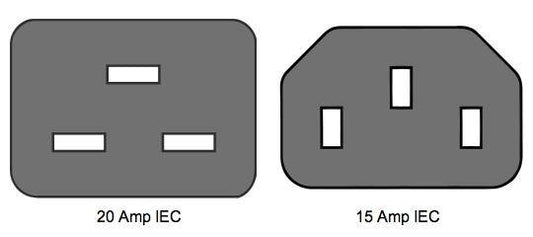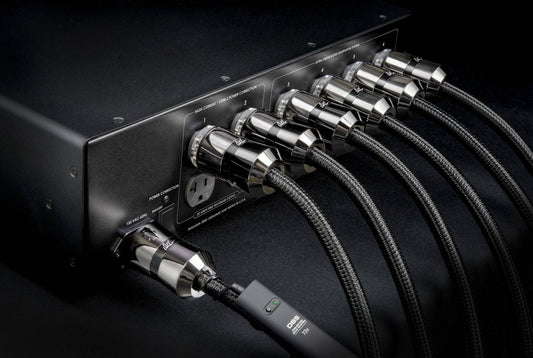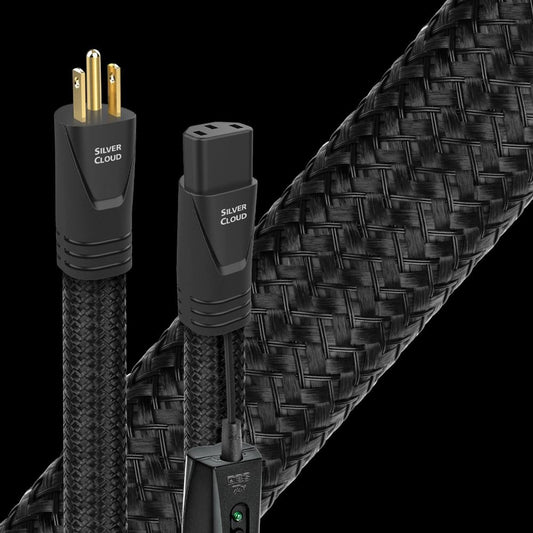-
AudioQuest NRG-Z3 Power Cable
Regular price From $329.95Regular priceUnit price per$329.95Sale price From $329.95 -
AudioQuest Mackenzie Interconnects
Regular price From $382.45Regular priceUnit price per$382.45Sale price From $382.45 -
AudioQuest Golden Gate Interconnect
Regular price From $137.95Regular priceUnit price per$129.95Sale price From $137.95 -
AudioQuest Red River Interconnect
Regular price From $277.45Regular priceUnit price per$277.45Sale price From $277.45 -
AudioQuest Wind Series Monsoon Power Cable
Regular price From $499.95Regular priceUnit price per$499.95Sale price From $499.95 -
AudioQuest NRG-Y3 Power Cable
Regular price From $209.95Regular priceUnit price per$209.95Sale price From $209.95 -
AudioQuest Rocket 33 Speaker Cable (pair)
Regular price From $519.95Regular priceUnit price per$519.95Sale price From $519.95 -
AudioQuest Big Sur Interconnect
Regular price From $199.95Regular priceUnit price per$199.95Sale price From $199.95 -
AudioQuest Evergreen Interconnect
Regular price From $89.95Regular priceUnit price per$89.95Sale price From $89.95 -
AudioQuest Cinnamon RJ/E Ethernet Cable
Regular price From $139.95Regular priceUnit price per$139.95Sale price From $139.95 -
AudioQuest Rocket 44 Speaker Cable (pair)
Regular price From $739.95Regular priceUnit price per$739.95Sale price From $739.95 -
AudioQuest Carbon USB Cable
Regular price From $229.95Regular priceUnit price per$239.95Sale price From $229.95SALE -
AudioQuest Cinnamon Digital Coaxial Cable
Regular price From $119.95Regular priceUnit price per$119.95Sale price From $119.95 -
AudioQuest Yukon Interconnects
Regular price From $520Regular priceUnit price per$520Sale price From $520 -
AudioQuest Cinnamon USB Cable
Regular price From $99.95Regular priceUnit price per$129.95Sale price From $99.95SALE -
AudioQuest Storm Series Thunder Power Cable
Regular price From $1,195Regular priceUnit price per$1,195Sale price From $1,195 -
AudioQuest Gold Anti-Static Record Brush
Regular price $35Regular priceUnit price per$35Sale price $35 -
AudioQuest Chicago Interconnect
Regular price From $147.45Regular priceUnit price per$147.45Sale price From $147.45 -
AudioQuest Wind Series Blizzard Power Cable
Regular price From $845Regular priceUnit price per$845Sale price From $845 -
AudioQuest NRG Edison Duplex Wall Outlet
Regular price $249.95Regular priceUnit price per$249.95Sale price $249.95 -
AudioQuest Niagara 3000 Low-Z Power/Noise Dissipation System
Regular price $3,900Regular priceUnit price per$3,900Sale price $3,900 -
AudioQuest Rocket 88 Speaker Cable (pair)
Regular price From $1,049.95Regular priceUnit price per$1,049.95Sale price From $1,049.95 -
AudioQuest Rocket 11 Speaker Cable
Regular price From $379.95Regular priceUnit price per$379.95Sale price From $379.95 -
AudioQuest Carbon Digital Coaxial Cable
Regular price From $324.95Regular priceUnit price per$324.95Sale price From $324.95 -
AudioQuest Carbon Optilink TOSLINK Cable
Regular price From $169.95Regular priceUnit price per$169.95Sale price From $169.95 -
AudioQuest Cinnamon Optilink TOSLINK Cable
Regular price From $99.95Regular priceUnit price per$99.95Sale price From $99.95 -
AudioQuest NRG-X3 Power Cable
Regular price From $109.95Regular priceUnit price per$109.95Sale price From $109.95 -
AudioQuest RCA to BNC Adapter
Regular price $19.95Regular priceUnit price per$19.95Sale price $19.95 -
AudioQuest Storm Series Tornado High-Current Power Cable
Regular price From $1,595Regular priceUnit price per$1,595Sale price From $1,595 -
AudioQuest Niagara 5000 Low-Z Power/Noise Dissipation System
Regular price $6,900Regular priceUnit price per$6,900Sale price $6,900 -
AudioQuest Sydney Interconnect
Regular price From $267.95Regular priceUnit price per$267.95Sale price From $267.95 -
AudioQuest Storm Series Hurricane High-Current Power Cable
Regular price From $2,095Regular priceUnit price per$2,095Sale price From $2,095 -
AudioQuest NRG-Z2 Power Cable
Regular price From $289.95Regular priceUnit price per$289.95Sale price From $289.95 -
AudioQuest Vodka Optical Cable
Regular price From $249.95Regular priceUnit price per$249.95Sale price From $249.95 -
AudioQuest Fog Lifters (set of 8)
Regular price $149.95Regular priceUnit price per$149.95Sale price $149.95 -
AudioQuest FLX-X RCA Splitter (each)
Regular price $24.95Regular priceUnit price per -
AudioQuest NRG-Y2 Power Cable
Regular price From $174.95Regular priceUnit price per$174.95Sale price From $174.95 -
AudioQuest Jitterbug FMJ USB Filter
Regular price $69.95Regular priceUnit price per$69.95Sale price $69.95 -
AudioQuest Carbon 48 HDMI Cable
Regular price From $329.95Regular priceUnit price per$329.95Sale price From $329.95 -
AudioQuest Cinnamon 48 HDMI Cable
Regular price From $189.95Regular priceUnit price per$189.95Sale price From $189.95 -
AudioQuest Irish Red Subwoofer Cable
Regular price From $139.95Regular priceUnit price per$139.95Sale price From $139.95 -
AudioQuest Carbon AES/EBU Digital Cable
Regular price From $424.95Regular priceUnit price per$424.95Sale price From $424.95 -
AudioQuest Diamond USB Cable
Regular price From $899.95Regular priceUnit price per$849.95Sale price From $899.95 -
AudioQuest Vodka RJ/E Ethernet Cable
Regular price From $649.95Regular priceUnit price per$649.95Sale price From $649.95 -
AudioQuest Black Lab Subwoofer Cable
Regular price From $59.95Regular priceUnit price per$59.95Sale price From $59.95 -
AudioQuest Forest USB Cable
Regular price From $99.95Regular priceUnit price per$99.95Sale price From $99.95 -
AudioQuest Forest Optilink TOSLINK Cable
Regular price From $64.95Regular priceUnit price per$64.95Sale price From $64.95 -
AudioQuest Vodka e-ARC HDMI Cable
Regular price From $279.95Regular priceUnit price per$279.95Sale price From $279.95 -
AudioQuest Boxer Subwoofer Cable
Regular price From $279.95Regular priceUnit price per$279.95Sale price From $279.95 -
AudioQuest Folk Hero Series Robin Hood ZERO Speaker Cable
Regular price From $1,395Regular priceUnit price per$1,290Sale price From $1,395 -
AudioQuest Forest Digital Coaxial Cable
Regular price From $49.95Regular priceUnit price per$49.95Sale price From $49.95 -
AudioQuest Telegartner CAT700 Ethernet Connector
Regular price $27.50Regular priceUnit price per$27.50Sale price $27.50 -
AudioQuest Forest 48 HDMI Cable
Regular price From $99.95Regular priceUnit price per$99.95Sale price From $99.95 -
AudioQuest Black Beauty Interconnect
Regular price From $895Regular priceUnit price per$895Sale price From $895 -
AudioQuest Coffee USB Cable
Regular price From $499.95Regular priceUnit price per$499.95Sale price From $499.95 -
AudioQuest Forest RJ/E Ethernet Cable
Regular price From $99.95Regular priceUnit price per$99.95Sale price From $99.95 -
AudioQuest PowerQuest 707 Power Conditioner
Regular price $1,599.95Regular priceUnit price per$1,599.95Sale price $1,599.95 -
AudioQuest Pearl 48 HDMI Cable
Regular price From $49.95Regular priceUnit price per$49.95Sale price From $49.95 -
AudioQuest Greyhound Subwoofer Cable
Regular price From $84.95Regular priceUnit price per$84.95Sale price From $84.95 -
AudioQuest Husky Subwoofer Cable
Regular price From $519.95Regular priceUnit price per$519.95Sale price From $519.95 -
AudioQuest IEC-90°/1 Adapter
Regular price $25.95Regular priceUnit price per$25.95Sale price $25.95 -
AudioQuest Blueberry 4K-8K HDMI Cable
Regular price From $39.95Regular priceUnit price per$39.95Sale price From $39.95 -
AudioQuest Vodka 48 HDMI Cable
Regular price From $630Regular priceUnit price per$630Sale price From $630 -
AudioQuest Type 9+DBS Speaker Cable
Regular price From $1,139.95Regular priceUnit price per -
AudioQuest Silver Anti-Static Record Brush
Regular price $19.95Regular priceUnit price per$19.95Sale price $19.95 -
AudioQuest Coffee HDMI Cable
Regular price From $449.95Regular priceUnit price per$599.95Sale price From $449.95SALE -
AudioQuest Thunderbird 48 HDMI Cable
Regular price From $1,000Regular priceUnit price per$1,000Sale price From $1,000 -
AudioQuest Rocket 22 Speaker Cable
Regular price From $599.95Regular priceUnit price per$599.95Sale price From $599.95 -
AudioQuest IEC-90°/2 Adapter
Regular price $25.95Regular priceUnit price per$25.95Sale price $25.95 -
AudioQuest Type 5 Speaker Cable
Regular price From $519.95Regular priceUnit price per -
AudioQuest Yosemite Interconnect
Regular price From $539.95Regular priceUnit price per$539.95Sale price From $539.95 -
AudioQuest PowerQuest 505 Power Conditioner
Regular price $849.95Regular priceUnit price per$849.95Sale price $849.95 -
AudioQuest Pegasus Interconnect
Regular price From $1,595Regular priceUnit price per$1,595Sale price From $1,595 -
AudioQuest Storm Series Tornado Source Component Power Cable
Regular price From $1,245Regular priceUnit price per$1,245Sale price From $1,245 -
AudioQuest C7 90-Degree Adaptor Kit
Regular price $51.90Regular priceUnit price per$51.90Sale price $51.90 -
AudioQuest Pearl Optilink TOSLINK Cable
Regular price From $34.95Regular priceUnit price per$29.95Sale price From $34.95 -
AudioQuest Diamond RJ/E Ethernet Cable
Regular price From $1,895Regular priceUnit price per$1,895Sale price From $1,895 -
AudioQuest Angel Interconnect
Regular price From $1,099.95Regular priceUnit price per$1,099.95Sale price From $1,099.95 -
AudioQuest Dragon 48 HDMI Cable w/ DBS
Regular price From $2,395Regular priceUnit price per -
AudioQuest PowerQuest 303 Power Conditioner
Regular price $529.95Regular priceUnit price per$529.95Sale price $529.95 -
AudioQuest Storm Series Hurricane Source Component Power Cable
Regular price From $1,745Regular priceUnit price per$1,745Sale price From $1,745 -
AudioQuest Mythical Creatures Series Dragon High-Current Power Cable
Regular price From $6,700Regular priceUnit price per$6,700Sale price From $6,700 -
AudioQuest Thunderbird Interconnect
Regular price From $2,700Regular priceUnit price per$2,700Sale price From $2,700 -
AudioQuest Folk Hero Series William Tell ZERO Speaker Cable
Regular price From $2,150Regular priceUnit price per$2,150Sale price From $2,150 -
AudioQuest DragonTail USB Adapter
Regular price $29.95Regular priceUnit price per$29.95Sale price $29.95 -
AudioQuest ThunderBird ZERO Full-Range Speaker Cable (pair)
Regular price From $3,900Regular priceUnit price per$3,900Sale price From $3,900 -
AudioQuest Type 9 Speaker Cable
Regular price From $739.95Regular priceUnit price per -
AudioQuest Coffee Digital Coaxial Cable
Regular price From $795Regular priceUnit price per$795Sale price From $795 -
AudioQuest Firebird 48 HDMI Cable w/ DBS
Regular price From $1,450Regular priceUnit price per -
AudioQuest Thunderbird e-ARC HDMI Cable
Regular price From $495Regular priceUnit price per$495Sale price From $495 -
AudioQuest Niagara 7000 Low-Z Power/Noise Dissipation System
Regular price $12,500Regular priceUnit price per$12,500Sale price $12,500 -
AudioQuest ThunderBird BASS Speaker Cable (pair)
Regular price From $1,650Regular priceUnit price per$1,650Sale price From $1,650 -
AudioQuest Yosemite Interconnect (Demo - No Boxes)
Regular price From $399.95Regular priceUnit price per$499.95Sale price From $399.95SALE -
AudioQuest Niagara 5000 Low-Z Power/Noise Dissipation System (OPEN)
Regular price $4,999Regular priceUnit price per$5,900Sale price $4,999SALE -
AudioQuest FireBird High-Current Power Cable
Regular price From $4,200Regular priceUnit price per$4,200Sale price From $4,200 -
AudioQuest Cherry Cola Active Optical HDMI Cable
Regular price From $699.95Regular priceUnit price per$699.95Sale price From $699.95 -
AudioQuest Thunderbird GroundGoody Grounding Wire
Regular price From $108Regular priceUnit price per$108Sale price From $108 -
AudioQuest Dragon e-ARC HDMI Cable w/ DBS
Regular price From $1,095Regular priceUnit price per$1,320Sale price From $1,095SALE -
AudioQuest Rocket 33 Speaker Cable (pair) (OPEN)
Regular price From $399.49Regular priceUnit price per$469.95Sale price From $399.49SALE -
AudioQuest Firebird Interconnect
Regular price From $5,150Regular priceUnit price per$5,150Sale price From $5,150 -
AudioQuest FireBird ZERO Full-Range Speaker Cable (pair)
Regular price From $8,100Regular priceUnit price per -
AudioQuest Lone Ranger Speaker Cable
Regular price From $2,590Regular priceUnit price per$2,590Sale price From $2,590 -
AudioQuest Brave Heart Speaker Cable
Regular price From $4,190Regular priceUnit price per$4,190Sale price From $4,190 -
AudioQuest Black Hole GroundGoody Grounding Wire
Regular price From $55Regular priceUnit price per$55Sale price From $55 -
AudioQuest Yosemite Turntable Cable RCA to RCA with Ground
Regular price $649.95Regular priceUnit price per$649.95Sale price $649.95 -
AudioQuest Rocket 44 Speaker Cable (pair) (OPEN)
Regular price From $492.95Regular priceUnit price per$579.95Sale price From $492.95SALE -
AudioQuest Dragon Interconnect
Regular price From $8,000Regular priceUnit price per$8,000Sale price From $8,000 -
AudioQuest FireBird Source Component Power Cable
Regular price From $3,500Regular priceUnit price per$3,500Sale price From $3,500 -
AudioQuest Wind Series Silver Cloud Power Cable w/ DBS
Regular price From $2,000Regular priceUnit price per$1,749.95Sale price From $2,000 -
AudioQuest Mythical Creature Series Dragon ZERO / BASS Bi-Wire Speaker Cable
Regular price From $19,650Regular priceUnit price per$19,650Sale price From $19,650 -
AudioQuest FireBird ZERO w/ FireBird BASS Bi-Wire Speaker Cable (pair)
Regular price From $11,250Regular priceUnit price per$11,250Sale price From $11,250 -
AudioQuest ThunderBird ZERO w/ ThunderBird BASS Bi-Wire Speaker Cable (pair)
Regular price From $5,550Regular priceUnit price per$5,550Sale price From $5,550 -
AudioQuest Mythical Creature Series Dragon BASS Speaker Cable
Regular price From $5,550Regular priceUnit price per$5,550Sale price From $5,550 -
AudioQuest FireBird BASS Speaker Cable (pair)
Regular price From $3,150Regular priceUnit price per$3,150Sale price From $3,150 -
AudioQuest Mythical Creature Series Dragon ZERO Full-Range / Treble Speaker Cable
Regular price From $14,100Regular priceUnit price per$115Sale price From $14,100 -
AudioQuest Dragon Source Component Power Cable
Regular price From $5,400Regular priceUnit price per$5,400Sale price From $5,400


















